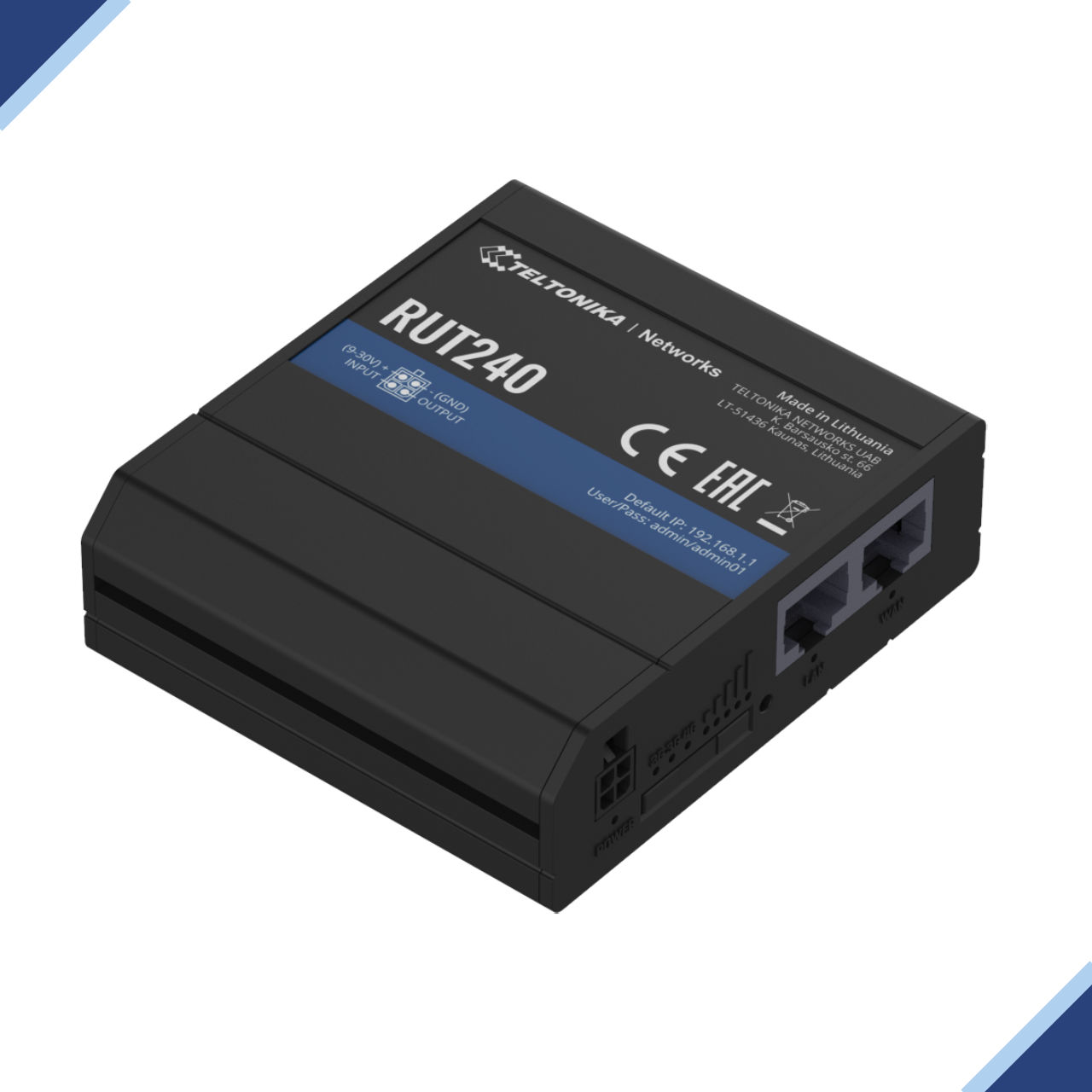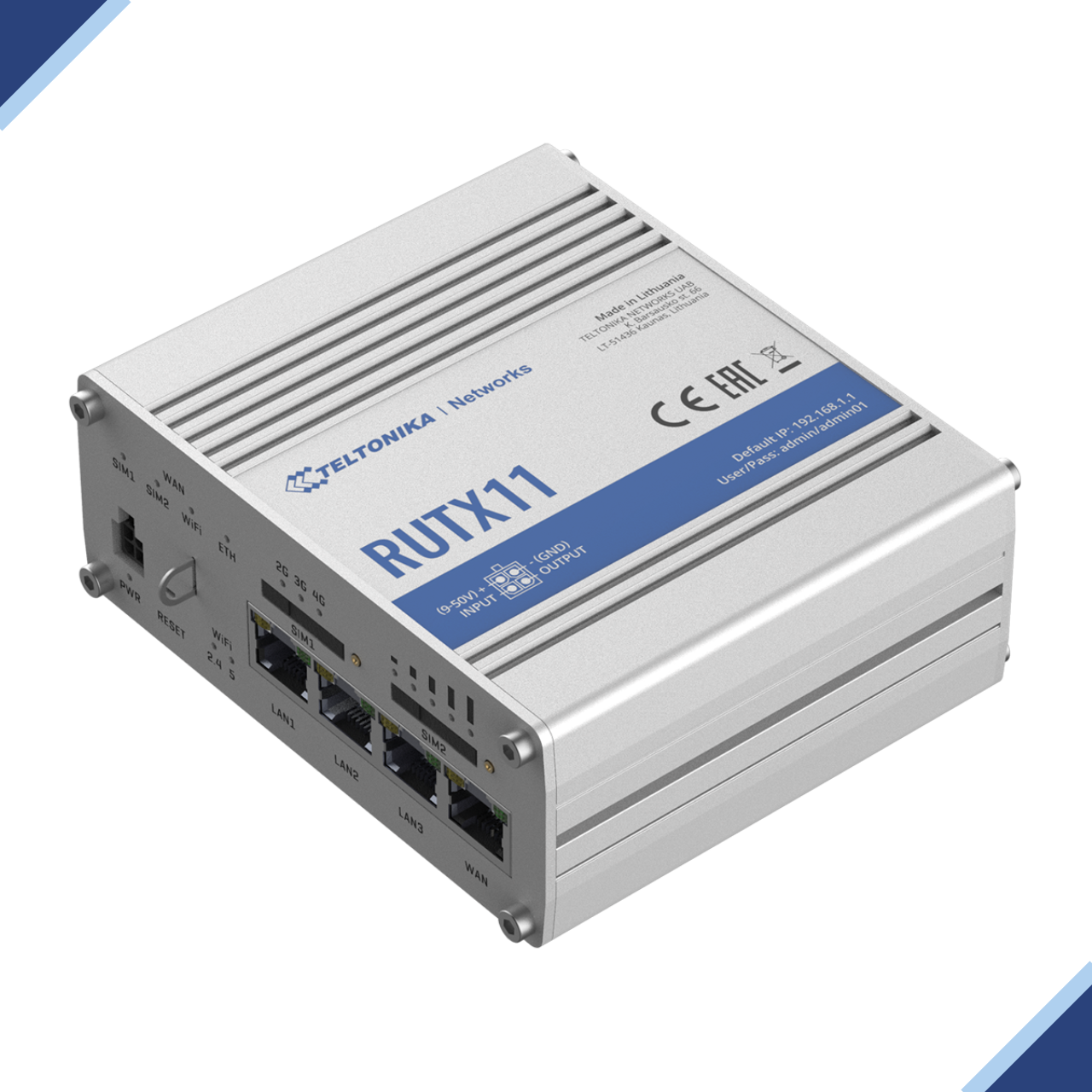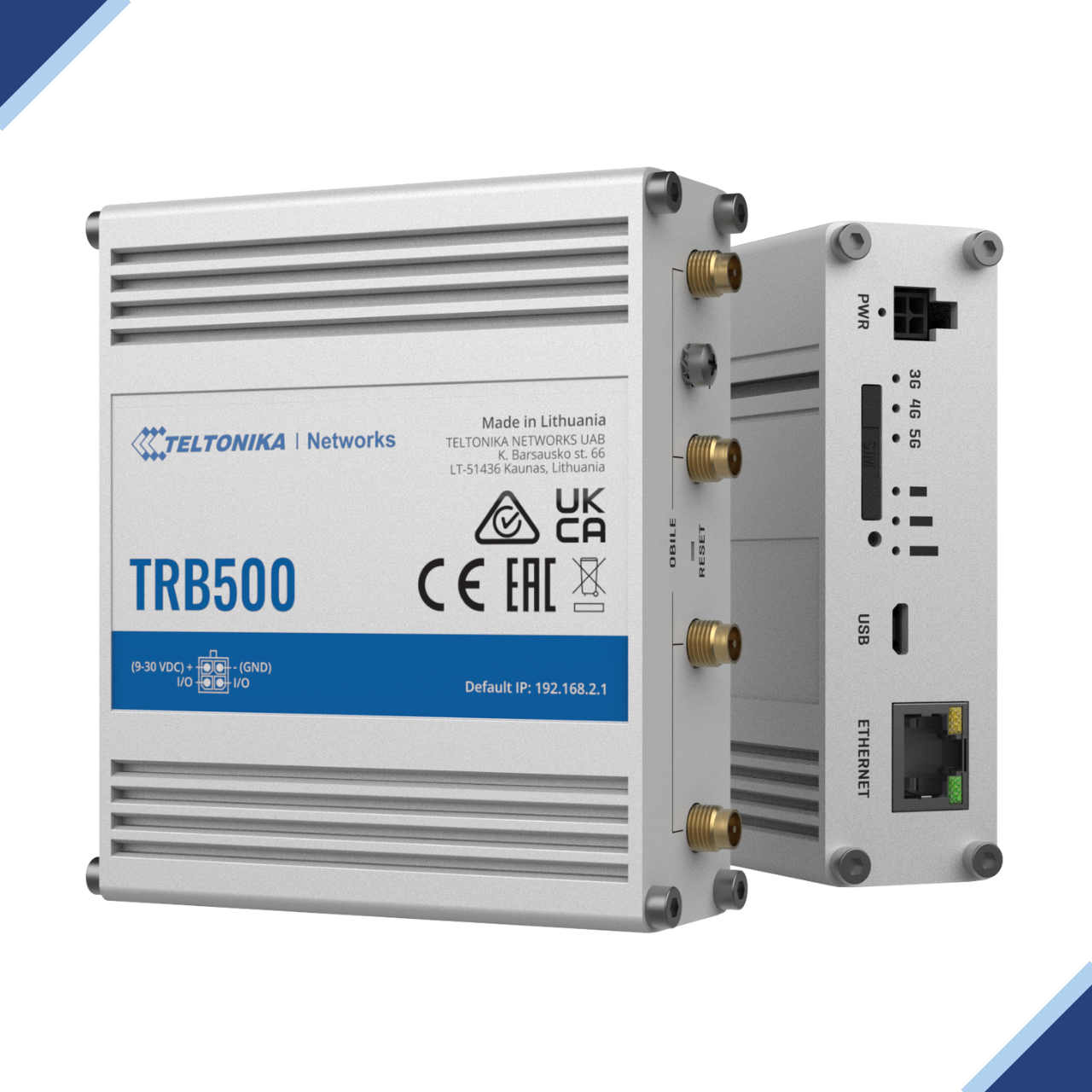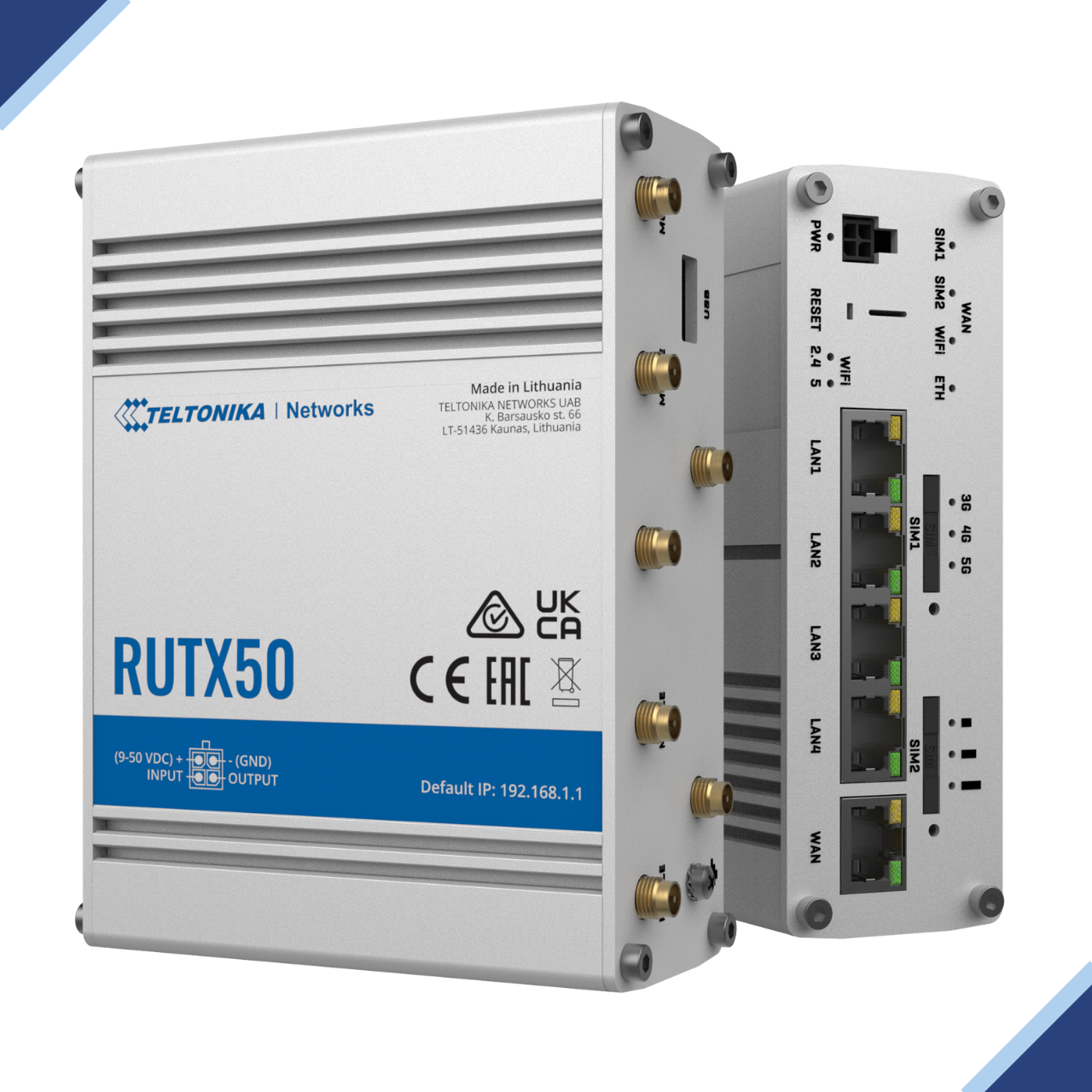eSIMs for Cellular Routers

Are you looking to adapt to eSIM-capable routers and gateways? If so, then look no further than the Teltonika Series of capable Routers, and Gateways. Please read further below, to get a quick overview about what an eSIM is.
What is an eSIM?
An eSIM is an embedded SIM that is soldered to your smartphone’s or 4G/5G router’s motherboard (like in the case of supported Teltonika Routers/Gateways) and cannot be removed. A popular form factor of this so-called eSIM is the MFF2, which are embedded SIMs, soldered onto the device circuit board. This is the preferred form factor for connected devices that move a lot of work in very harsh conditions, like in Industrial or Commercial use and applications, as well as in mobility applications.
It does everything a removable SIM card does, such as identifying your device to carriers and storing your phone number and account information.
What Are the Benefits of Using an ESIM?
Some of the benefits of using an eSIM are:
- Easier to switch carriers: You can activate a cellular plan from your carrier without having to use a physical SIM. You can also choose your service provider and connect to their network remotely.
- Own and safely store multiple eSIMs: eSIM devices (like the iPhone 14) can store up to eight eSIMs Profile. You can use two phone numbers at the same time and switch between them easily.
- Better dust and waterproof rating: The eSIM can be soldered inside a device and then sealed, making it water- and temperature-resistant(thalesgroup.com). This makes it more robust and ideal for use in harsh environments.
- Occupies less physical space on smartphones: The eSIM is much smaller than a physical SIM card, saving up to 90% of the space on a device. This allows for more compact and sleek designs for smartphones and other devices.
- Ease of tracking your device: The eSIM is embedded into your device’s motherboard, so it cannot be removed or tampered with. This makes it easier to locate and secure your device if it is lost or stolen.
What is a MFF2 SIM?
MFF2 is a Machine Identity Module (MIM) that is specifically designed for M2M applications. It is a type of SIM card that has a smaller and more rugged form factor than traditional SIM cards. It can be soldered directly onto a circuit board of a device (like most of the Teltonika Routers/Gateways), avoiding the need for a SIM socket. It can provide cellular connectivity for devices that operate in different networks and regions. It can also support features such as eXtended-Life, which maximizes the lifespan of the memory chip, and eUICC, which allows remote management of multiple profiles from different operators.
MFF2 vs MFF1
MFF1 and MFF2 are both Chip SIMs that can be soldered onto a circuit board of a device. They are also known as DFN8, SON8, or VQFN-8. They are suitable for IoT and M2M applications that require a small and rugged form factor. However, MFF1 and MFF2 are not the same as eSIMs. eSIM is a term that refers to eUICC, which is a technology that enables remote management of multiple profiles from different operators on a SIM card. eUICC can be applied to any SIM form factor, not just Chip SIMs. Therefore, MFF1 and MFF2 can be either UICC or eUICC, depending on the technology they use. UICC is the traditional SIM technology that requires the physical swapping of SIM cards to change operators.
MFF2 vs eSIMs
MFF2 and eSIM are not exactly comparable terms, as they refer to different aspects of SIM technology. MFF2 is a form factor of a SIM card, which means it is a physical shape and size that can be soldered onto a circuit board of a device. eSIM is a term that refers to eUICC, which is a technology that enables remote provisioning and management of multiple network profiles on a SIM card. Therefore, MFF2 can be either UICC or eUICC, depending on the technology it uses. UICC is the traditional SIM technology that requires the physical swapping of SIM cards to change operators.
To compare MFF2 and eSIM, we need to clarify what we mean by eSIM. If we mean eUICC, then we are comparing two different technologies that can be applied to any SIM form factor. If we mean MFF2 with eUICC, then we are comparing two different form factors that can use the same or different technologies. In either case, here are some of the differences between MFF2 and eSIM:
Size: MFF2 is one of the smallest SIM form factors, measuring 6mm x 5mm x 0.67mm. eSIM can refer to any SIM form factor that uses eUICC technology, such as 2FF, 3FF, 4FF, or MFF2. The smallest eSIM form factor is also MFF2.
Installation: MFF2 is soldered onto the circuit board of a device, making it non-removable and resistant to shock and corrosion. eSIM can be either removable or non-removable, depending on the form factor. For example, 4FF (nano-SIM) is removable, while MFF2 (chip SIM) is non-removable. For industrial use cases, like what Teltonika Routers/Gateways are designed for, you would prefer MFF2 over other form factors.
Flexibility: MFF2 with UICC technology can only store one network profile and requires physical swapping of SIM cards to change operators. MFF2 with eUICC technology can store multiple network profiles and switch between them remotely over-the-air (OTA). eSIM with eUICC technology can also store multiple network profiles and switch between them remotely OTA, regardless of the form factor.
Teltonika Devices Which Are Capable of Using MFF2 (eSIM)
Please don’t hesitate to contact us, should you need eSIMs on the following model/series of Teltonika Routers/Gateways.
- TRB14x
- TRB2x5
- TRB500
- RUT241
- RUT360
- RUT952
- RUT955_950
- RUT956_951
- RUTX12
- RUTX14
- RUTX50
- RUTXR1
- TCR100












